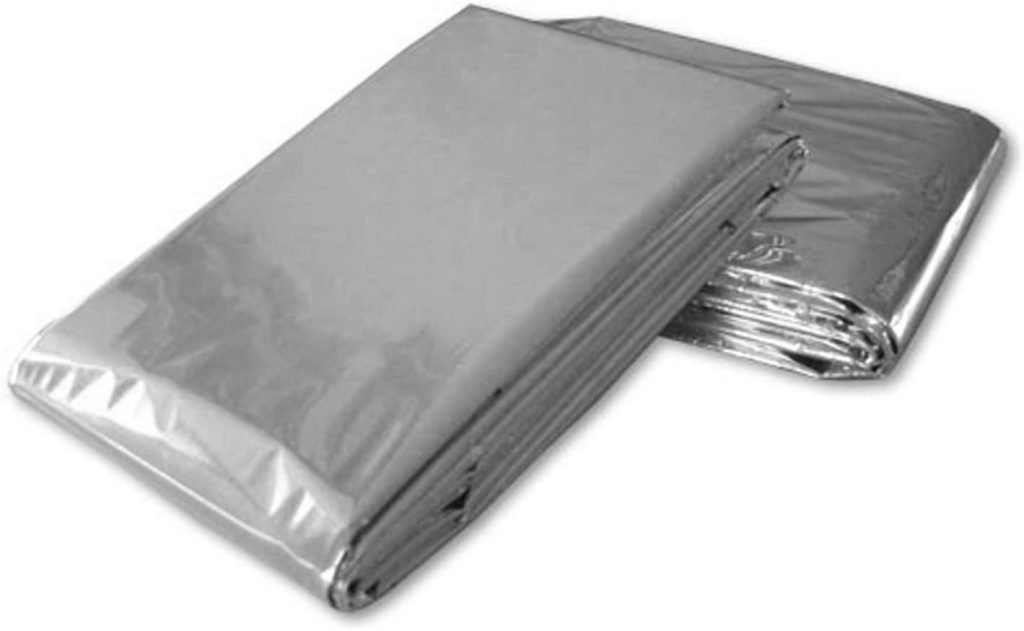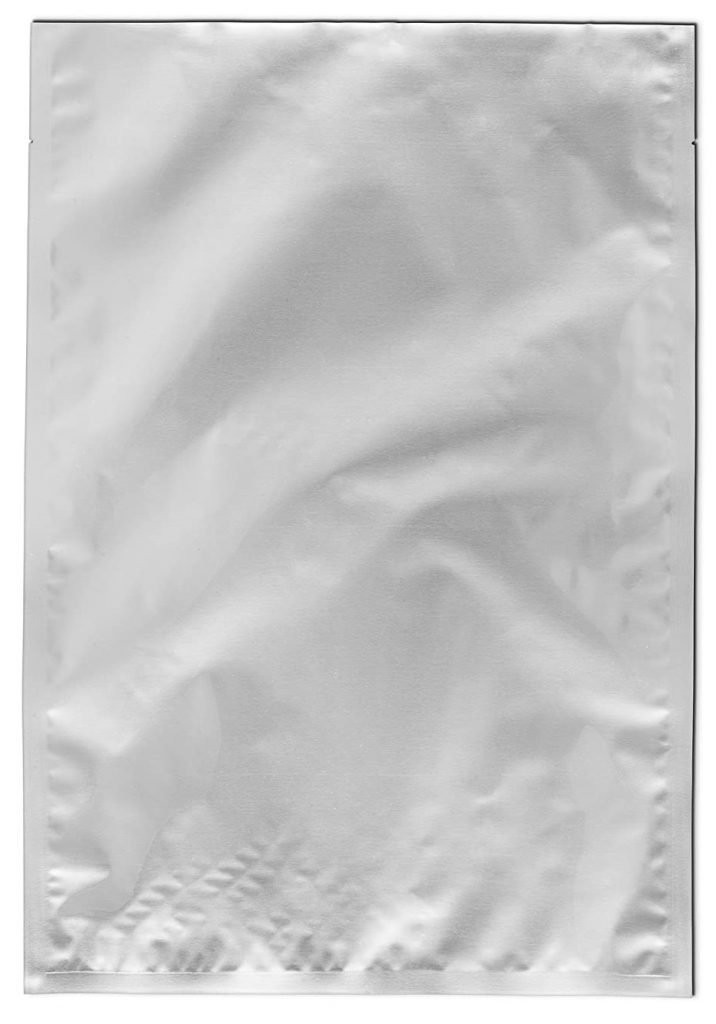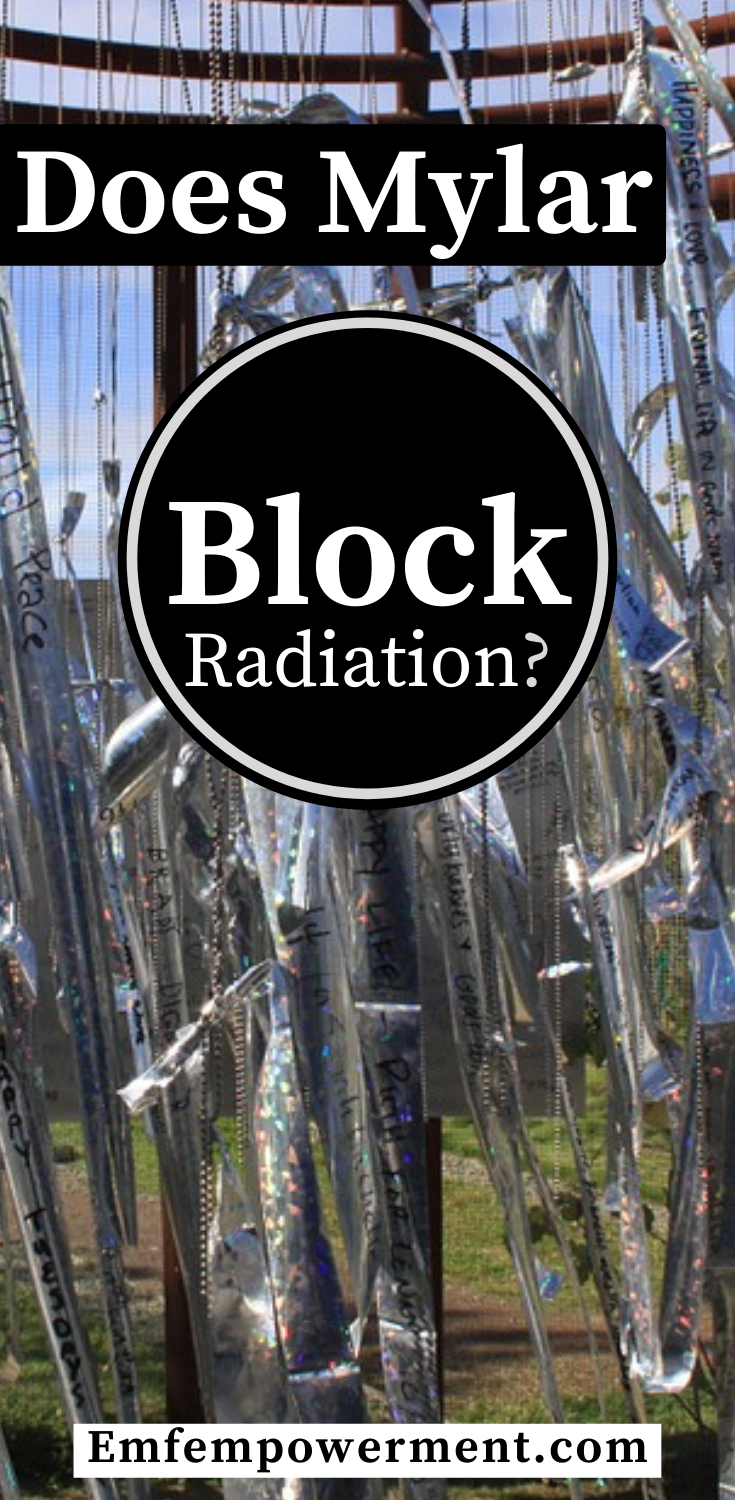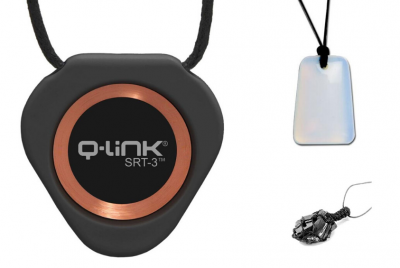When worn correctly, both Bluetooth and wired earbuds offer a lightweight and comfortable way to listen…
Does Mylar Block Radiation?

*We may earn a commission for purchases made using our links. Please see our disclosure to learn more.
You’ve probably seen mylar around before. Commonly used in emergency blankets, metallic balloons, confetti, and food packaging, mylar can be found in a number of places. This shiny, reflective material has a multitude of applications, which may lead you to wonder if it is also useful for shielding against EMF radiation.
The answer, in this instance, is not really a definitive yes or no — it’s a little more complicated than that.
What is mylar?
First, it’s helpful to get some sort of an idea what mylar really is. You may have gathered that it is a synthetic material, that is, it isn’t something you would find out in nature. Rather, mylar is polyester-based, and its technical name is biaxially-oriented polyethylene terephthalate. Mylar is actually a brand of biaxially-oriented polyethylene terephthalate (similar to using Xerox to refer to a photocopy). This longer name, while technically accurate, isn’t terribly catchy, so for now let’s continue to use the term “mylar.”
Mylar is produced using polyethylene terephthalate (PET) that is heated until it is in a molten state. Once the PET is super-heated, the film is pressed onto a chill roll. To biaxially-orient the PET, a technique called drawing is used. During drawing, the PET film is moved back and forth on heated rollers and then allowed to set. As the cooling process takes place, silicone dioxide and other microscopic particles are added in. This step is necessary because, without it, the resulting mylar film would be too smooth and its layers would stack in on each other.
Sometimes, a metal such as aluminum is added to the mylar. This helps reflect away visible and infrared light. When using mylar as food packaging, for example, it’s reflective properties are particularly important.
From a historical standpoint, mylar has been around since the 1950s. It was initially manufactured by chemical company DuPont, although by 1955 Kodak had begun using mylar in its photographic film. The resulting product, ESTAR Base, was used by the US military to gather images and intelligence during reconnaissance flights. By the 1960s, NASA had also begun using mylar in its Echo balloon satellites.
Nowadays, mylar is useful for many more everyday applications, as well. We’ve already mentioned that it’s used in food packaging, including food saver storage bags. Additionally, mylar is used as a covering for important documents. Mylar bags are used to preserve and protect comic books stored in various archives, including the Library of Congress. It is used for emergency blankets. Mylar liners in gloves and other winter gear help reflect back warmth, and chopped up bits are made into confetti for celebrating. NASA has even again turned to mylar, this time for radiation protection inside its spacesuits.
Does mylar block radiation?
If you read that last sentence, you already know that mylar must block some radiation. After all, why else would NASA use it in their spacesuits? But what kind of radiation does it block? And how effective is it?
First, note that there are actually two different types of radiation: ionizing and non-ionizing.
Ionizing radiation has a lot of energy. It comes in the form of waves that are fast-paced and close together. These waves have so much energy they can cause an atom’s nucleus to split apart, although at smaller doses they simply knock some of the atom’s electrons out of their orbit. These “free radicals,” as they are called, are known to cause health issues such as cancer, which is why it’s recommended to minimize your ionizing radiation exposure.
In general, we are exposed to very small doses of ionizing radiation constantly, as cosmic radiation exists in nature. We are also exposed to ionizing radiation during airplane flights as well as during medical procedures such as x-rays. These doses are all quite small, however.
Non-ionizing radiation, meanwhile, does not have all that much energy. It can’t split an atom or affect its electrons, but it can cause cellular changes and thermal heating. Non-ionizing EMF radiation is most dangerous when exposure is prolonged and extended, such as using a cell phone in close proximity for an hour per day for several years.
Ionizing radiation is blocked by dense materials, whereas non-ionizing radiation is blocked using conductive materials.
Mylar, for its part, can fall into either of those categories. If enough layers of mylar are present, it can become a dense enough material to repel ionizing radiation — just like with NASA’s spacesuits. And, if combined with protective metals such as aluminum, mylar can effectively attenuate, or block, a certain percentage of EMF radiation, as well.
Note that we only said a certain percentage. Mylar isn’t 100% effective at reducing EMF radiation. That being said, it is capable of some degree of attenuation, as evidenced by the video below.
Products with mylar
Not many existing EMF protection products make use of mylar. That being said, this material is both lightweight and readily available, making it an excellent option for DIY projects. You can easily create your own jacket, router guard, smart meter cover, microwave cover, computer cover, cell phone bag, or even a purse liner using mylar blankets and bags.
Let’s take a cell phone bag, for example. Cell phones are notorious for their production of RF-EMF radiation, and storing one in a safe place while not in use can cut down on your overall exposure tremendously. So, you could take a mylar food storage bag and repurpose it into a cell phone carrier. Or, if you wanted to make a case, you could makeshift your own using a mylar blanket and some adhesive.
The products below are a good starting point. Along with a pair of scissors, you could use either to create a number of anti-radiation items out of mylar.
Science Purchase Emergency Mylar Thermal Blankets

These mylar blankets from Science Purchase come in a pack of 20, so with one purchase, you have plenty of material to play with. Each blanket is 54-inches by 84-inches, so they are reasonably large, as well. These blankets are individually sealed and fold down to wallet-size, and you can easily cut a blanket to fit your needs, depending on the project at hand. There is no padding, liner, or other synthetic material used in these blankets — they are simply made from mylar.
Discount Mylar Bags 1-Gallon Genuine Mylar Bags

Maybe you are looking more for storage — say if you want to create a cell phone bag or a WiFi router guard. You could do this using a mylar bag, such as Discount Mylar Bags’ one-gallon genuine mylar bags. Available in 50-count packs, the bags are also sold alongside oxygen absorbers to aid in food storage. Each bag is ten inches by fourteen inches, and they are made using a high-quality 3.5-mil structure mylar film.
Testing your creation
Once you’ve built something out of mylar, the next step is to make sure it’s actually effective. You can do this using any basic EMF meter, provided it is capable of detecting both RF and ELF-EMF radiation. We usually recommend the TriField TF2 for its reliability and accuracy. For more choices, head over to The Best EMF Meters For Any Budget.
EMF meter in hand, you can now test your creation. The exact matter in which you do the testing, however, may vary depending on what you actually made. To go back to our earlier example, let’s say you made a cell phone case. To test the radiation shielding properties of your case, first, take a base measurement of your cell phone while it’s powered on and with the case off. You could also use a second cell phone to call yours during this time and record the fluctuations in EMF. The goal is just to get a feel for your phone’s average EMF output during normal usage.
Then, put the case on your phone and repeat your measurements. You should notice a marked reduction in EMF radiation with the case on versus it off. If you don’t, you may need to make adjustments to your case — perhaps it doesn’t encompass the whole phone, or there is a rip or tear in the mylar.
Another example could be if you made a smart meter cover. First, take your measurement with the over off. Start out directly next to the smart meter and step back, noting how the levels drop. Next, install the mylar cover and repeat your measurements, again starting directly next to the meter itself.
What should be starting to become clear now is that, regardless of the item you made, the overall goal of your measurements is the same. Take a base reading without your protective covering, and then another reading with the mylar device installed. If the device is effective, your EMF levels will be lower.
Final thoughts
While mylar may not be tremendously popular in anti-EMF merchandise, its affordability and light weight make it an excellent choice when going the DIY route. Whether you want to make your very own jacket or line your purse with something protective, mylar is both versatile and easy to work with.




